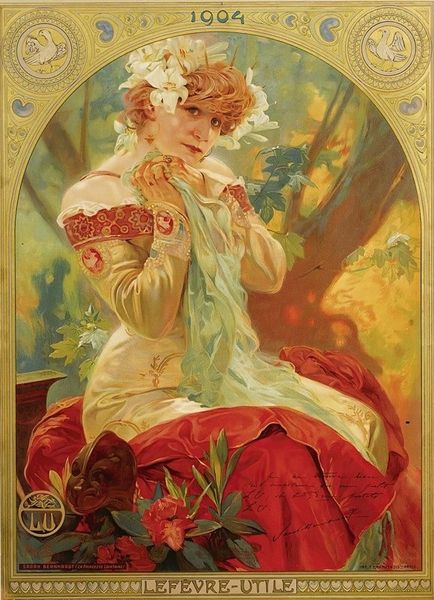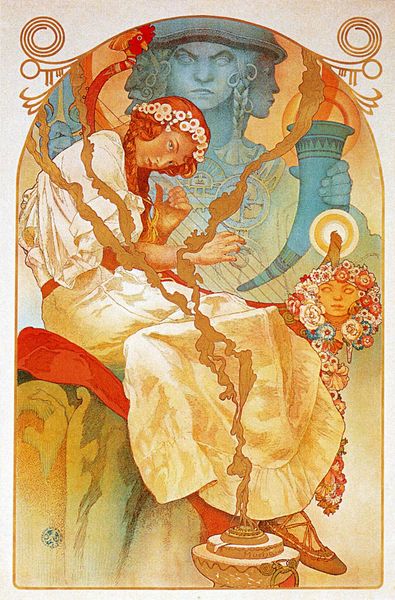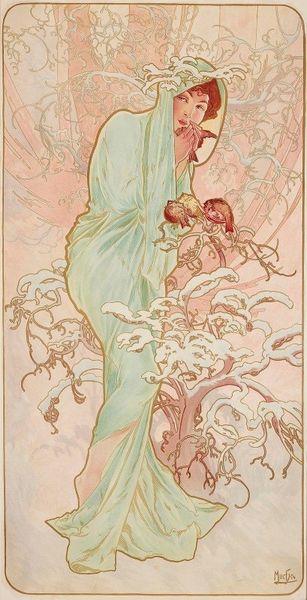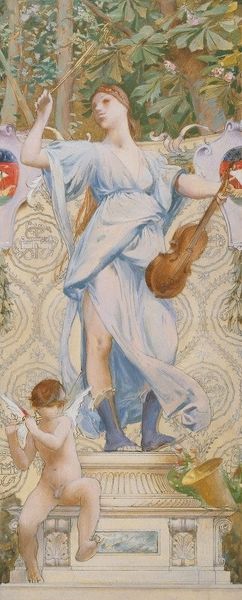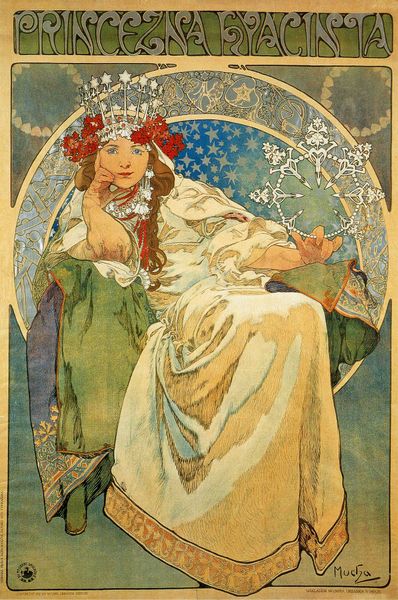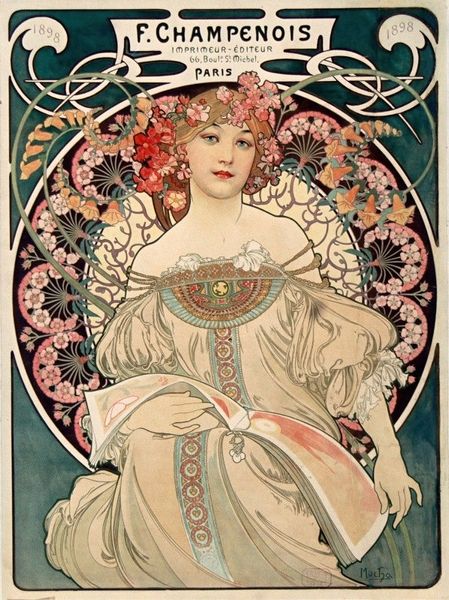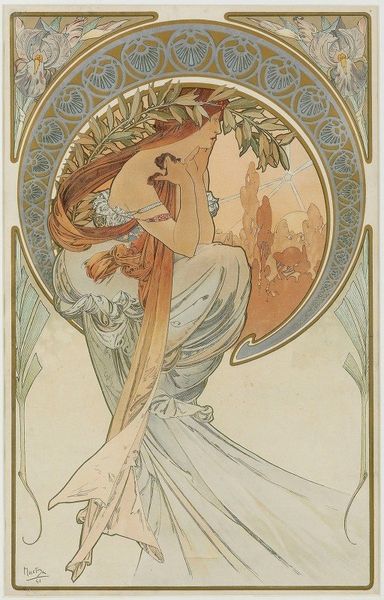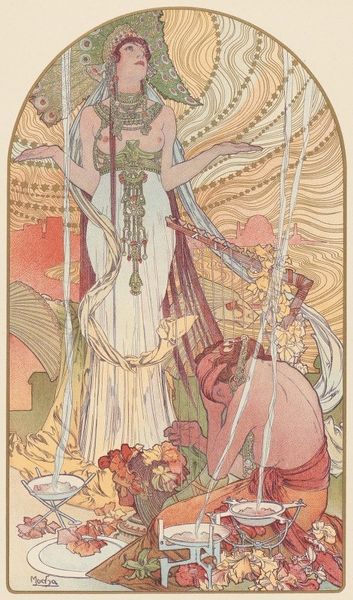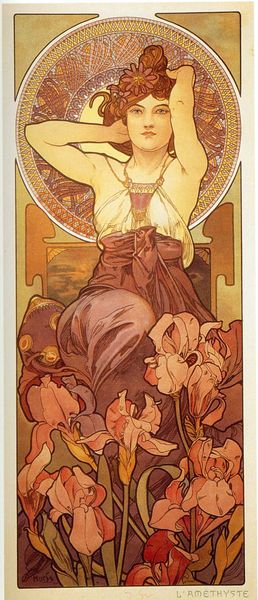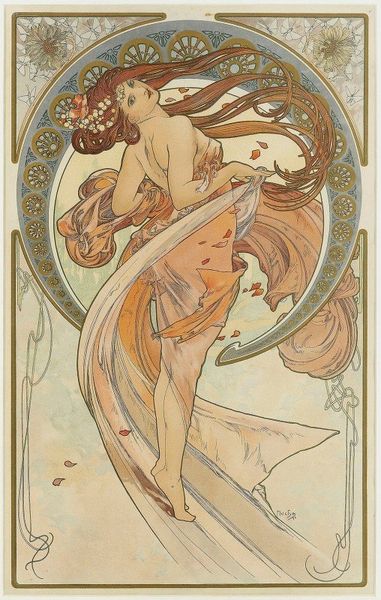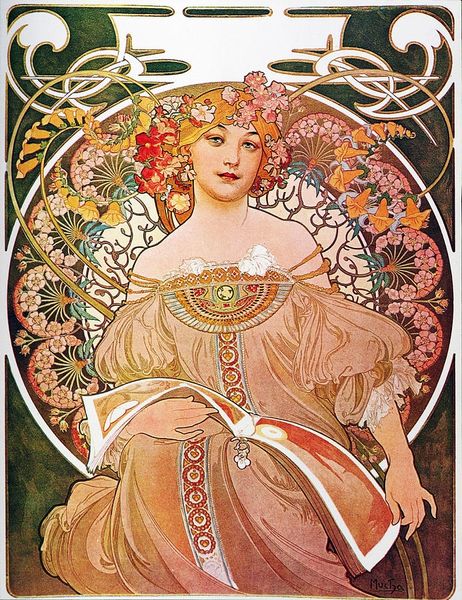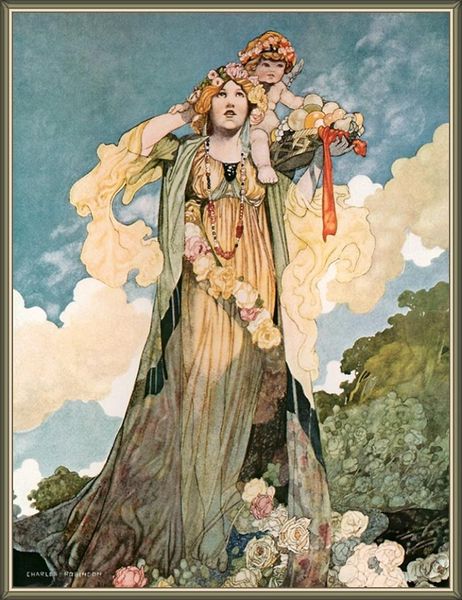
painting, oil-paint
#
portrait
#
figurative
#
art-nouveau
#
painting
#
oil-paint
#
figuration
#
oil painting
#
symbolism
#
watercolor
Copyright: Public Domain: Artvee
Alphonse Mucha painted "Portrait of Josephine Crane-Bradley as Slavia" in the early 20th century, likely using oil on canvas. It depicts Josephine Crane-Bradley, an American heiress, as a personification of "Slavia," a concept referencing Slavic identity and unity. The image creates meaning through symbolic visual codes. Mucha was Czech, and this portrait reflects the cultural and political currents of the time. It was made when Slavic nations were seeking independence from empires such as the Austro-Hungarian and Ottoman empires. Mucha's art frequently served as a form of cultural expression and, at times, even political advocacy for the Slavic people. The figure of Slavia connects to a broader artistic and intellectual movement called Pan-Slavism, which emphasized the shared heritage and destiny of Slavic nations. To understand this artwork better, we can research the historical context of Pan-Slavism, Mucha's involvement in the movement, and the patronage of wealthy Americans who supported such artistic endeavors. Art history reminds us that art's meaning is deeply rooted in its social and institutional context.
Comments
No comments
Be the first to comment and join the conversation on the ultimate creative platform.
